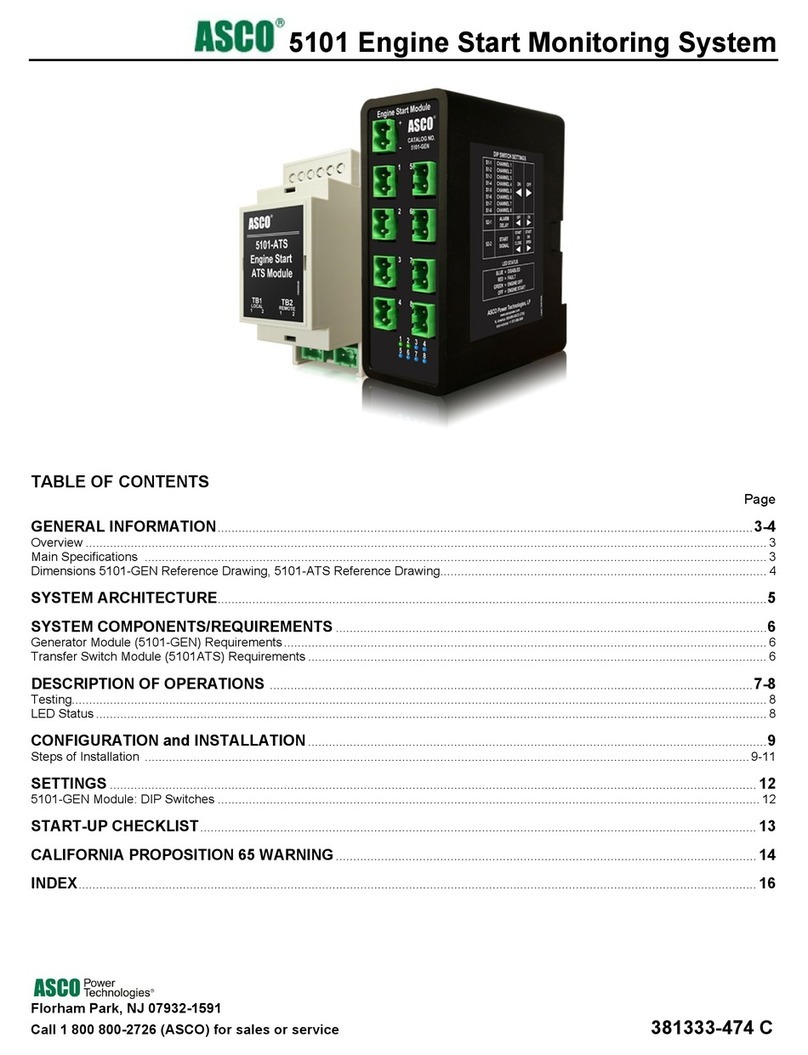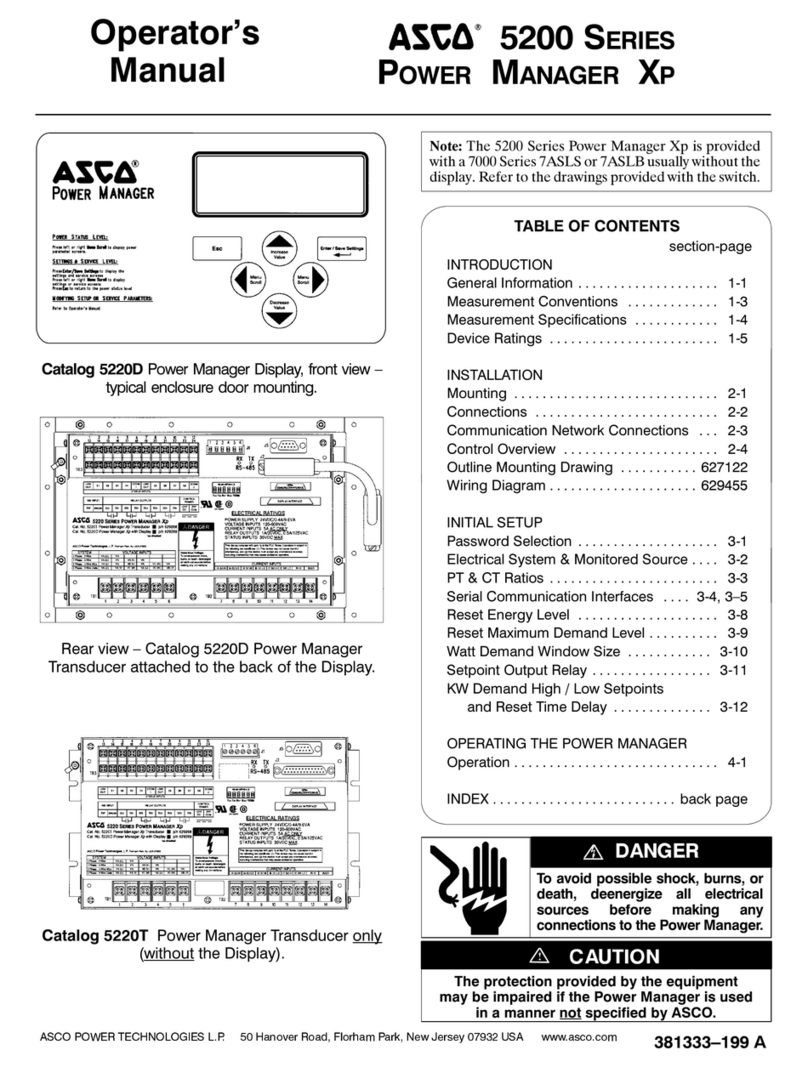
1-1 Introduction Operator’s Manual 381333-368G 5210 Digital Power Meter
General Information
The Catalog 5210 Digital Power Meter (DPM) collects real-time power system information from ASCO Power
Control Systems and Automatic Transfer Switches (ASCO Series 300, 4000 Series, 7000 Series). The DPM provides
measurement for voltage, current, active power, reactive power, apparent power, active energy, reactive energy,
apparent energy, power factor, and frequency. The intended use of the DPM is in the standard metering applications.
The DPM has built in serial communication interfaces. ASCOBUS II and serial Modbus RTU protocols are available
to communicate with ASCO Power Quest or other monitoring applications via the built-in RS485 port or through the
use of ASCO Catalog 5150 Connectivity Module (Accessory 72E). The APAC interface is used for communication
with ASCO Catalog 5140 Quad-Ethernet Module (Accessory 72EE).
The DPM includes a backlit graphic LCD display and membrane controls (keys). All monitoring and control
functions can be done from the front of the unit for convenience and safety.
The DPM can accommodate the following three phase and single phase system types:
• Single phase – 2 wire system (1 – 2W)
• Single phase – 3 wire system (1 – 3W)
• Three phase – 3 wire Delta system (3 – 3W)
• Three phase – 4 wire WYE system (3 – 4W)
Monitored & Calculated Data
The following computed parameters are available both on the local display and through the serial interface:
• Line–to–neutral voltages (VAN, VBN, VCN)
• Line–to–neutral voltage average (VAVE)
• Line–to–line voltages (VAB, VBC, VCA)
• Line–to–line voltage average (VLAVE)
• Current on each phase (IA, IB, IC)
• Current in the neutral conductor (IN)
• Average current (IAVE)
• Active power, kW per phase and total (WA, WB, WC, WT)
• Reactive power, kVAR per phase and total (VARA, VARB, VARC, VART)
• Apparent power, kVA per phase and total (VAA, VAB, VAC, VAT)
• kWhours importing, exporting and net (kWhIMP, kWhEXP, kWhNET)
• kVARhours leading, lagging and net (kVARhLEAD, kVARhLAG, kVARhNET)
• kVAhours net (kVAhNET)
• Power factor (PF)
• Signal frequency (Hz)
• Total harmonic distortion (THD)
• Maximum kW demand (hourly, daily, monthly, yearly, etc.) with real-time clock
Transfer Switch Position Input (optional)
Used when the Digital Power Meter is providing measurement on the load terminal of a transfer switch.
Cleaning
The exterior of the Digital Power Meter should be cleaned by wiping the front panel of the display unit with a soft
cloth and cleaning agents that are not alcohol based, and are non-flammable, non-explosive. All other servicing
should be performed by authorized factory personnel.





























